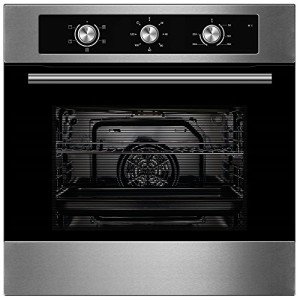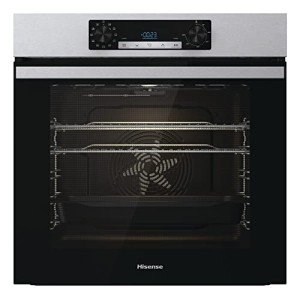
What Is a Single Oven Electric Fan?
single oven gas oven electric fan is a form of cooking appliance that uses an internal fan to circulate hot air throughout the oven cavity. This helps eliminate hot spots and can increase the overall quality of cooking.
Does your oven has fans? If yes, will it make certain areas of your oven warmer or cooler than others, at a predetermined temperature?
Functions
Oven functions, also referred as cooking modes or settings, offer a variety of pre-programmed oven options to cater for different cooking recipes and requirements. These functions control the operation of the heating elements and the fan in the oven, allowing for more precise and reliable results.
Most ovens are classified as 'fan assisted', which means that as the oven element heats up there is an air-flow system that circulates hot air around the oven's cavity to assist in cooking food. This helps reduce the preheating time and ensures that the food is cooked evenly. In an oven, there are generally two fans: one that disperses hot air for cooking, and another that cools down the oven. The cooling fan is controlled by a thermal switch. It is turned on automatically when the thermostat knob is not set to off.
Functionality for Convenience
Ovens come with a variety of features that make it simpler to use them, including the defrost function which uses low temperatures to melt frozen food without cooking it. This helps speed the process of defrosting and helps prevent dishes from becoming partially cooked or dry. The reheating feature is beneficial as it employs a gentle heat to reheat foods, helping to retain their flavour and texture.
A child lock feature secures the control panel to stop children from altering the settings or accessing it. The minute minder function is another feature that can be utilized without regard to the cooking functions. It switches off the oven when the specified amount of time has been completed. This helps you to not forget to turn it off.
If you love cooking a variety of different dishes regularly, an oven with multiple functions is the ideal. A fan oven with a roast function allows you to cook various meats and vegetables on multiple racks at the same time which makes it ideal for family meals or Sunday lunches. meals. There are also grill and bake options that can be great for adding an attractive golden top to casseroles, potatoes and cakes.
Design

Electric
single oven and grill ovens that are built-in are available in a variety of sizes and styles to fit your kitchen and cooking needs. Some models have additional functions like self-cleaning, delay start and warm hold. These features can help you save time and effort. You can read reviews to find out how other consumers rate these ovens.
A fan oven has an air circulator inbuilt that allows for more even cooking and faster results than a traditional oven. This is especially beneficial for cooking dishes with a high fat content, such as roasts and pies. You can tell the difference between an oven that is a fan model by checking the control panel. Look for an icon for a fan or a three-pronged fan encircled by the shape of a circle. Conventional ovens are typically marked differently and might not have the fan function at all.
Blomberg's A-rated integrated
single oven and hob oven is large in capacity of 71L. It is designed for performance and looks. The oven comes with a full set of presets including grill and fan assisted cooking. It has a dedicated light-only mode to make it easier for cleaning. It also features an easy-to-use clock/timer with programmable controls and a clean enamel interior.
Energy Efficiency
As appliances for the home in general, ovens are not a significant contributor to overall electricity usage when compared to devices like fridges and air conditioners. The type of oven used and the method of cooking used can influence energy costs. A majority of the latest
single built in fan oven with grill ovens are more energy-efficient than older models. This helps reduce energy consumption, saving you money on your utility bill.
The main difference between a conventional and fan oven is that a conventional oven is one heating element, whereas the fan oven includes a heating element as well as a fan to circulate hot air around the food. With a fan, that you can cook at lower temperatures, which also reduces energy use. In addition, the fan can help to cut down on baking times.
A brushless DC motor is another option to ensure that you get the most energy-efficient single oven electric fan,
mouse click for source,. This motor technology is more efficient than previous, non-brushless models. It also reduces noise levels.
You can find the energy rating on the manual for the appliance or elsewhere. This number will give an idea of the amount of energy consumed by the oven when it is being used. You can then compare the price per kWh with your local electricity tariff. It will vary according to where you live.
There are many factors that can affect the power consumption of an oven such as the type of food you're cooking, its temperature setting, and the length of time you cook it for. The cooking process can impact the amount of electricity consumed, as can preheating the oven prior to use.
To maximize the efficiency of your oven shut it off when you've finished using it and monitor your use. You can also use a smart meter to obtain accurate information about the amount your appliances are costing you, and consider alternative cooking methods that use less energy.
Installation
If you're installing a new electric fan oven for the first time or replacing an existing one there are some costs to consider. The costs can range from disposing of the old appliance to installing or upgrading utilities and outlets. You may also need to install a vent hood if the new appliance requires it. Find the best deal.
You can tell if your oven has a fan by looking on the control panel. The fact that it's equipped with a fan means that air circulates constantly within the oven chamber, allowing it to reach temperature quicker and distribute heat evenly. Conventional ovens might have a different symbol on the control panel, or no fan icon at all.
You should look at the wiring of your old unit before you hire an electrician. It will be easy for an electrician professional to connect the unit to your wiring system if the older one plugs directly into a power outlet. If the older oven is hard-wired to your circuit breaker, or switchbox, it will be more difficult. If the new oven has higher wattage than the old, you'll need to ensure that your circuit breakers are able to handle the additional current. Also, you'll need to ensure that any cables used are of sufficient size.
Installation costs will also vary depending on where your kitchen is located in your home. A freestanding oven that is able to be easily moved from room to room is cheaper than a wall-mounted unit which will require cutting into cabinets or countertops to be installed. Additional charges may be incurred if you need to run or add electrical or gas lines, or ventilation ductwork.
An easy electric oven installation is expected to cost between $70-$155 if you are replacing an existing oven in the same spot. The addition of a new outlet in the kitchen will increase the price by around $200, and installing a vent hood will add about $300.